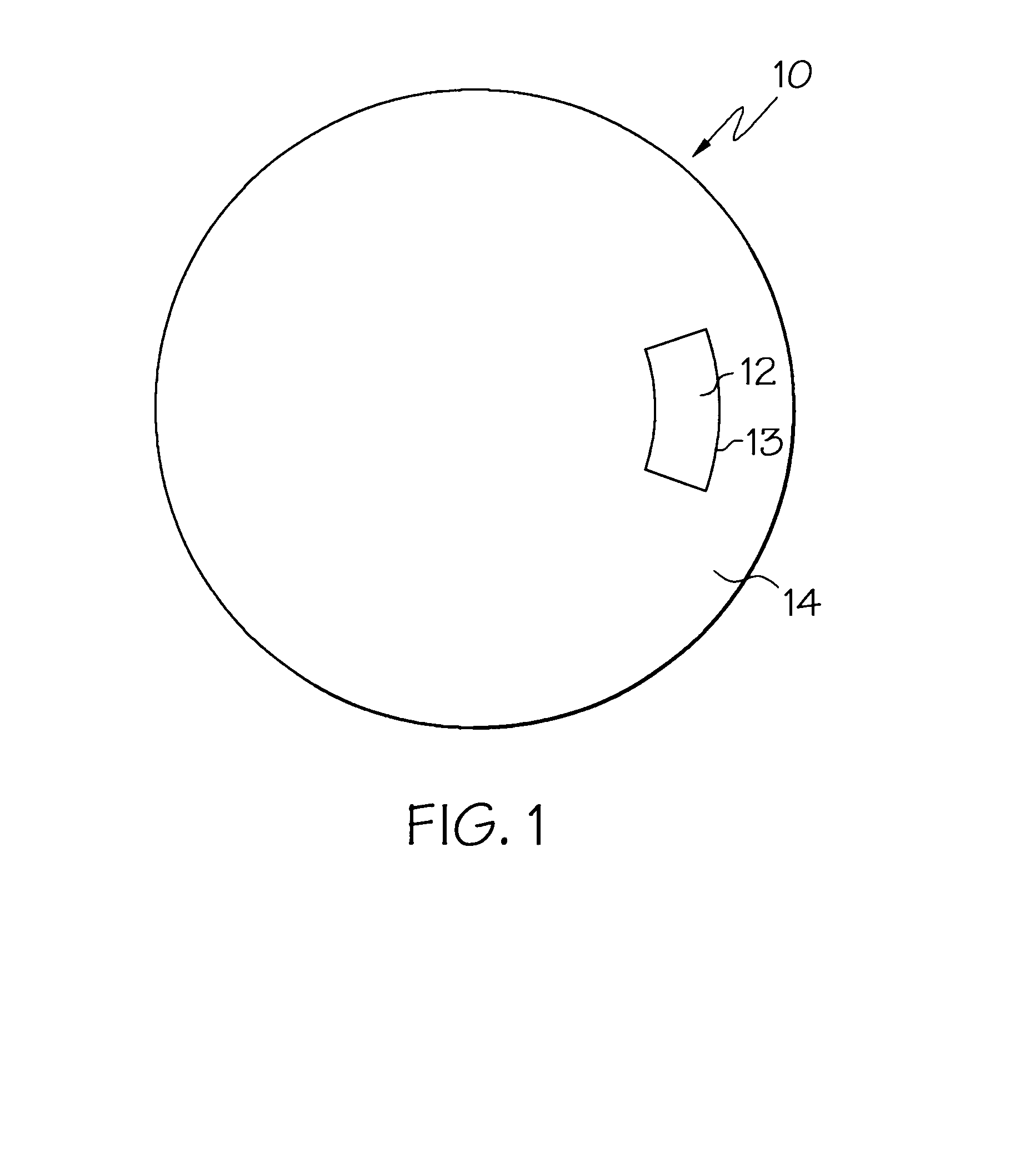Molding a polishing pad having integral window
a polishing pad and window technology, applied in the field of polishing pads, can solve the problems of determining when the wafer has been polished, higher scrap rate and production costs, and leakage of slurry between the polishing pad and the window piece,
- Summary
- Abstract
- Description
- Claims
- Application Information
AI Technical Summary
Problems solved by technology
Method used
Image
Examples
Embodiment Construction
A polishing pad according to the invention as shown in FIG. 1 comprises a one-piece molded article 10 which is shaped as a substantially flat disk having opposite major surfaces. One of the major surfaces is a polishing surface that is applied to a workpiece during polishing, and the other major surface is a back surface that is contacted by a platen on which the polishing pad is mounted, either directly or through an intermediate base pad.
The molded polishing pad is characterized by a region 12 wherein the polymeric material is transparent. By transparent it is meant that the region exhibits transmissivity on the order of 20% or more to an incident light beam having some wavelength in the range from infrared to ultra-violet, at least when the light beam is at an angle of incidence substantially normal to the surface of the polishing pad. It should be understood that the transparent region need not be totally transmissive, and that some scattering of incident light, particularly due...
PUM
| Property | Measurement | Unit |
|---|---|---|
| thickness | aaaaa | aaaaa |
| mold temperature | aaaaa | aaaaa |
| mold temperature | aaaaa | aaaaa |
Abstract
Description
Claims
Application Information
 Login to View More
Login to View More - R&D
- Intellectual Property
- Life Sciences
- Materials
- Tech Scout
- Unparalleled Data Quality
- Higher Quality Content
- 60% Fewer Hallucinations
Browse by: Latest US Patents, China's latest patents, Technical Efficacy Thesaurus, Application Domain, Technology Topic, Popular Technical Reports.
© 2025 PatSnap. All rights reserved.Legal|Privacy policy|Modern Slavery Act Transparency Statement|Sitemap|About US| Contact US: help@patsnap.com


